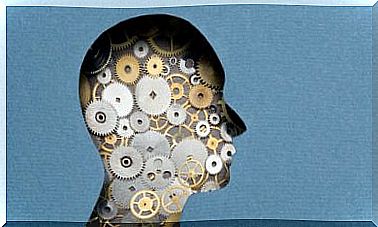Restless Legs Syndrome And Motor Cortex: How Are They Related?

It’s 00:25 at night. I try to sleep but it is impossible. Every time my body and mind touch sleep, a tingling begins to run through my legs. I need to move them. I lift one leg and wave it in the air. I pick up the other and repeat the same maneuver. It seems that it has passed.
I try to sleep again, but the tingling appears again. I get up, walk around the room a few times, massage my legs, and even tap myself. The tickling seems to have subsided. I’ve managed to ease the symptoms of Restless Leg Syndrome (RLS) enough to let sleep take hold of me.
Restless legs syndrome is not easy to describe. In fact, there is a belief that the legs move on their own. However, what actually occurs is a constant urge to move the lower extremities to stop the unpleasant tingling that runs through them. Some people define this tickling as ants moving up and down the length of the legs. But what does this syndrome consist of and what are its main characteristics? And finally, how is it related to the motor cortex? Let’s get started!

What is restless legs syndrome?
According to the Spanish Sleep Association (ASENARCO), restless legs syndrome consists of a sensory and motor disorder that is defined according to four major diagnostic criteria:
- Urgent need to move your legs. Usually accompanied or caused by an unpleasant sensation, pain or discomfort.
- Symptoms manifest and become more intense in inactivity situations. For example, when sitting, lying down or just before sleeping.
- Symptoms disappear or improve with movement or stretching of the legs. While the activity lasts, an improvement is noticeable, although it can reappear just when the movements are finished.
- Existence of the circadian rhythm. Symptoms appear or worsen in the afternoon or evening.
The Spanish Sleep Association also highlights several diagnostic support criteria :
- Onset of sleep disorder.
- Family history.
- Normal neurological examination.
- Involuntary movements of the legs during the day.
- Periodic leg movements during sleep.
RLS and the motor cortex
The neurologist Francisco Aguilar (2007), highlights among the possible causes of this syndrome iron deficiency and the intake of tricyclic antidepressant medications. As well as selective serotonin reuptake inhibitors, lithium and caffeine. However, new findings link restless leg syndrome with abnormal functioning of the motor cortex.
Since the Johns Hopkins University School of Medicine, research has shed light on the possible cause of this syndrome. Apparently, it could be the hyperactivity of the cerebral motor cortex.
In this way, new avenues of research can be opened to help treat this syndrome more effectively. Rachel Salas, professor of neurology at Johns Hopkins University, says that “the region of the brain that controls the legs shows greater cortical excitability in the motor cortex. “

Treatments
Pharmacotherapy
In the field of pharmacology, to treat restless legs syndrome, you highlight different types of medications.
- The dopamine agonists such as ropinirole, pergolide and pramipexole usually the first more treatments applied.
- The benzodiadepinas are often prescribed to calm the tingling and help sleep.
- The antiepileptic also among prominent drugs to treat this syndrome. Gabapentin and carbamazepine stand out.
- The opioids also often seen by its analgesic power.
Non-pharmacological treatment
Making lifestyle changes can help alleviate the symptoms of this syndrome, especially those related to sleeping habits. Some of the most recommended are:
- Maintaining a regular sleep schedule.
- Reduce or eliminate the consumption of substances such as coffee, alcohol and tobacco.
- Perform physical exercise frequently.
conclusion
Despite advances in science, there is still much to investigate. With regard to restless legs syndrome, much remains to be discovered. Patients affected by this syndrome would not only stop feeling an unpleasant tingling running through their lower extremities, but would also regain their quality of life.
Eliminating or, at least, reducing the symptoms associated with this syndrome is equivalent to falling asleep properly and being able to rest. Therefore, during the day, sleep associated with a bad rest, as well as tiredness, fatigue and mood disorders would disappear.









